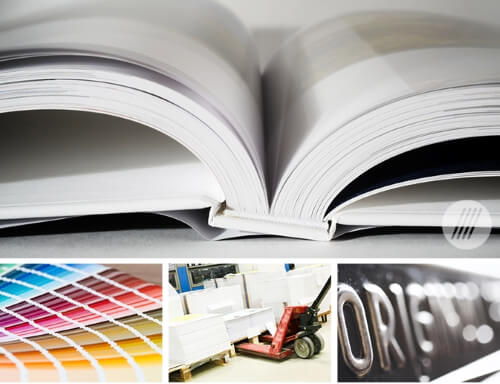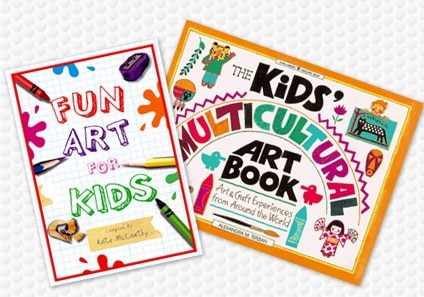The Artist’s Guide to Making a High-Quality art book
The Artist’s Guide to Making a High-Quality art book
Blog Article
Understanding the Refine Behind Premium Art Book Printing for Art Enthusiasts
When it concerns top quality art book printing, understanding the intricacies of the process can raise your admiration for the end product. You may not recognize how essential paper option and ink selections are to the vibrancy of artwork. Each aspect plays a considerable duty in attaining the wanted effect. As you check out the different components of art book printing, you'll reveal insights that might change your point of view on art preservation and presentation.
The Relevance of Paper Choice in Art Book Printing
When it concerns art book printing, the choice of paper can make or damage the last product. You want your artwork to shine, and the best paper improves color vibrancy and detail. Consider variables like weight, structure, and surface; these components significantly impact just how viewers perceive your job.
For example, a larger supply conveys high quality and toughness, while a textured coating can include depth to pictures. Smooth paper is superb for in-depth reproductions, allowing fine lines and refined shades to appear crisp.
Don't forget regarding the paper's brightness; a brighter sheet can aid shades pop, making your art more distinctive. You'll also wish to believe about how the paper connects with inks and whether it can handle the printing procedure without contorting or bleed-through. Ultimately, selecting the appropriate paper establishes the stage for your art, guaranteeing it captures the audience's attention equally as you imagined.
Picking the Right Inks for Vivid Reproductions
Picking the best inks is just as important as picking quality paper to attain vibrant recreations in your art book. When you're printing artwork, you want colors that stand out and accurately stand for the original piece. Choose inks with a high pigment focus; these often tend to produce richer and more saturated shades.
You could take into consideration making use of archival inks, which resist fading in time, ensuring your art book remains as striking as the day it was published. If you're working with pictures or digitally produced art, pigment-based inks can offer a larger color range, improving information and deepness.
Don't ignore the coating! Matte and glossy inks can dramatically change the appearance of your art work, so assume concerning the appearance you're aiming to accomplish - art book. Eventually, the right ink choice enhances your paper option, creating a spectacular visual experience for your readers
The Role of Shade Monitoring in Print Quality
Color administration plays an important duty in accomplishing high print top quality for your art book. It guarantees that the shades you see on your display translate precisely to the published page. Without effective shade monitoring, your vivid art work may appear dull or altered, threatening your innovative vision.
Next, make use of color profiles customized for your printer and paper kind. These accounts lead the printer in duplicating shades accurately, lowering inconsistencies in between digital and printed versions.
When you prepare your files, consider making use of a color space like Adobe RGB or CMYK, depending upon your printer's specs. Constantly evidence your work, too; an examination print can disclose any type of possible shade problems before the last run. By prioritizing shade administration, you protect the integrity of your art, guaranteeing your audience experiences it as you planned.

Recognizing Different Binding Techniques
Accomplishing the perfect appearance for your art book goes beyond shade administration; binding techniques also play a substantial duty in its total presentation and resilience. You have numerous choices to evaluate, each with its very own one-of-a-kind features.
If you're aiming for a professional feel, situation binding supplies a sturdy choice with a tough cover, best for showcasing your art work. On the other hand, best binding gives an adaptable spinal column while keeping expenses down, making it a prominent option for softcover publications.
Spiral binding allows your art book to lay flat, which is terrific for showing images without blockage. Saddle stitching is suitable for smaller brochures, offering a tidy finish without the bulk.
Eventually, the binding technique you choose must mirror your imaginative vision and exactly how you want readers to engage with your work. Make certain to weigh these alternatives carefully to accomplish the most effective result for your project.
The Effect of Print Dimension and Design on Discussion
While the choice of print size and layout may seem additional to material, they substantially influence how your artwork is regarded. The dimensions of your prints can either improve or decrease the effect of your items. Bigger prints can attract visitors in, enabling them to appreciate intricate details, while smaller sized styles might call for even more intimate interaction.

Conservation Methods for Long-lasting Art Books
To assure your art books stand the test of time, it's necessary to execute reliable conservation strategies. Usage acid-free storage boxes or safety sleeves to protect them from dirt and physical damage.
When handling your publications, always clean your hands or wear cotton gloves to avoid oils and dirt transferring onto the web pages. Prevent flexing or creasing the spines; rather, make use of book supports when showing them.
For included security, take into consideration purchasing archival-quality materials for any kind of repair work or improvements. useful source Routinely inspect your collection for indicators of wear or damages, resolving issues promptly. By following these easy methods, you can ensure your art books stay dynamic and available for years ahead, preserving their beauty and worth for future generations.
Collaborating With Printers for Ideal Results
When you're prepared to publish your art book, choosing the ideal printer is important to accomplishing your vision. Clear communication concerning your assumptions and needs will certainly help assure that both you and the printer get on the same page. Allow's explore just how to make this partnership as smooth and effective as possible.
Choosing the Right Printer

Effective Interaction Approaches
Efficient communication is vital for transforming your art book vision right into reality, especially when working together with printers. art book. Begin by clearly detailing your job's objectives, including layout components, preferred products, and any certain printing strategies. Don't wait to share your motivations and referrals; this aids the printer understand your aesthetic
Establish regular check-ins to review progress and resolve any find here type of concerns. Usage visuals, like mock-ups or samples, to share your concepts better. Be open to responses, as printers typically have useful understandings that can enhance your task. Preserve a positive connection by being considerate and pleased of their competence. This partnership will guarantee that your art book satisfies your expectations and beams in its last kind.
Often Asked Concerns
What Are Typical Blunders to Stay Clear Of in Art Book Printing?
When printing your art book, avoid usual mistakes like bad resolution pictures, inaccurate shade profiles, and disregarding page layout. Don't forget to proofread and double-check information to verify your last product fulfills your assumptions.
Just How Does Digital Printing Differ From Conventional Printing Approaches?
Digital printing utilizes digital documents to develop prints straight, enabling quicker turn-around and modification. On the other hand, typical approaches entail physical plates, which can be time-consuming and much less adaptable for little runs or special layouts.
What Is the Normal Turnaround Time for Art Book Printing?
The typical turnaround time for art book printing varies, yet you can expect it to take anywhere from a few weeks to numerous months. Factors like complexity, amount, and printing approach all influence this timeline.
Can I Publish a Limited Edition Art Book Financially?
You can print a limited edition art book economically by selecting economical materials, maximizing print runs, and using electronic printing options. Careful planning and budgeting will aid you attain quality without overspending.
What Are the Environmental Considerations in Art Book Printing?
When taking into consideration art book printing, you must think of green materials, lasting inks, and energy-efficient processes (art book). Choosing neighborhood printers can additionally reduce your carbon footprint, making your job both beautiful and eco liable
Report this page